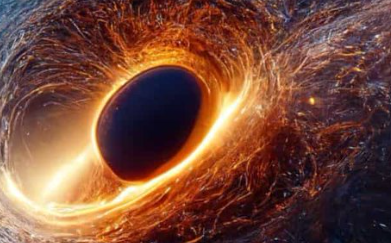Here’s a bunch of studies recently out that most might have missed. Black Holes, and cats and more.
A recent astronomical discovery has revealed a second intermediate-mass black hole in the Milky Way, following closely on the heels of a similar finding last week. These black holes, which may have formed in the primordial universe or through the accretion of multiple stars in a cluster, represent the seeds of supermassive black holes.
Hubble spots likely intermediate-mass black hole in Omega Centauri https://t.co/x7YYsjqB87
— Dear DNR (@OBrien4sheriff) July 21, 2024
Astronomers from the University of Cologne have identified this second black hole in the immediate vicinity of Sagittarius A*, the supermassive black hole at the center of our galaxy. While studying a cluster of stars called IRS 13, located just 0.1 light-year from the galaxy’s core, researchers observed an unexpectedly orderly pattern of star movements and high density. These observations led them to conclude that either IRS 13 is interacting with Sagittarius A*, or a gravitational object at the cluster’s center is maintaining its compactness. Multi-wavelength observations from the Very Large Telescope, ALMA, and the Chandra X-ray telescope support the existence of this intermediate-mass black hole within IRS 13.
Scientists spot intermediate-mass black hole lurking at centre of Milky Way star cluster
READ: https://t.co/R5g58jCUsChttps://t.co/R5g58jCUsC
— WION (@WIONews) July 21, 2024
Researchers at The Ohio State University have been studying house cats to gain insights into human obesity. Due to their similar environmental exposures, cats serve as an excellent model for human diseases. In a new study, scientists fed seven obese cats a controlled diet and analyzed their gut bacteria. They discovered that the abundance of propionic acid, a short-chain fatty acid, increased during weight loss, indicating a direct dietary impact on metabolism.
A study from Nottingham Trent University has found that rhesus macaques with high facial expressivity have stronger social bonds and are more successful in their social networks. Researchers observed nine social groups and tracked 17 facial muscle movements, focusing on dominant males. They found that males with diverse facial expressions had better social connections, suggesting that facial expressivity plays a crucial role in building and maintaining social bonds.
Researchers at the University of Cologne found a rare intermediate-mass black hole in a star cluster near Sagittarius A at the Milky Way’s center.#Intermediatemass #BlackHole #Astronomyhttps://t.co/KtMhKQDZ1a
— HaywaaWorldwide (@HaywaaWorldwide) July 21, 2024
Key Points:
- Astronomers discovered a second intermediate-mass black hole in the Milky Way near Sagittarius A*, reinforcing the theory of their primordial formation or star cluster accretion.
- The black hole is located in the IRS 13 star cluster, whose orderly star movements and high density suggest a gravitational object at its center.
- House cats, due to their similar living conditions to humans, are being studied to understand obesity, with findings indicating diet-related changes in gut bacteria.
- Rhesus macaques with high facial expressivity are found to have stronger social bonds and greater social success, highlighting the importance of facial muscles in communication.
- The studies utilized advanced telescopes and careful observation to draw these conclusions, emphasizing the interconnectedness of animal behavior and human health.
Lap Fu Ip – Reprinted with permission of Whatfinger News



